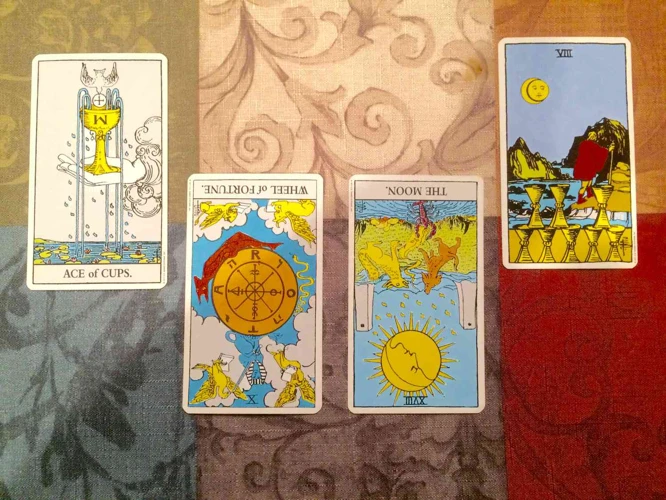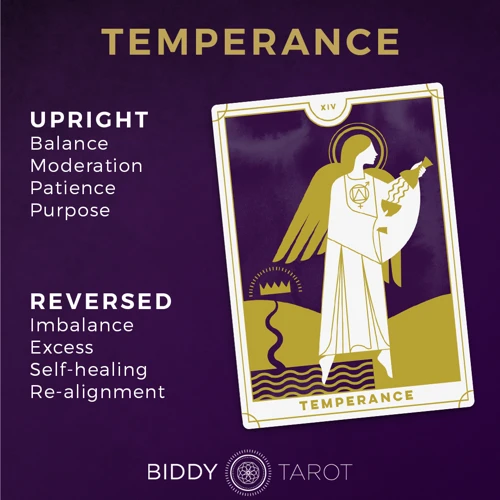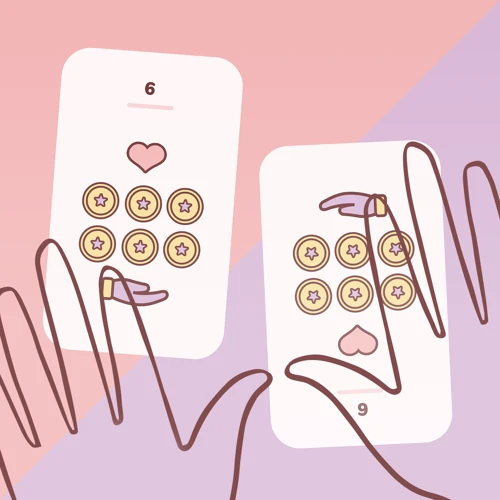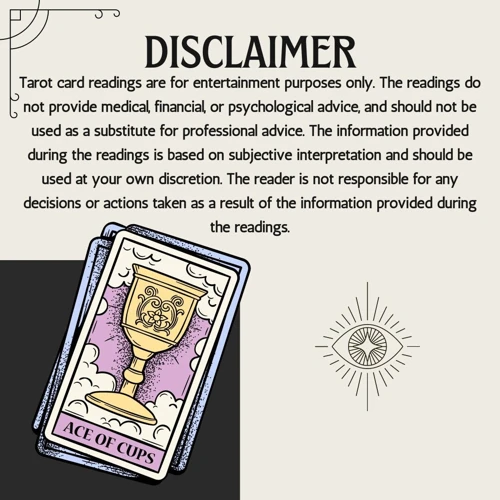Tarot card reading is an ancient practice that has captivated and intrigued people for centuries. One aspect of tarot that can cause confusion for both beginners and seasoned readers alike is the presence of reversed cards. When a card appears upside down or reversed in a spread, it can alter its meaning and create a sense of uncertainty. In this article, we will explore different methods to balance reversed tarot cards, allowing you to effectively navigate the intricacies of this powerful divination tool. By understanding the meaning, misconceptions, and benefits of balancing reversed cards, as well as utilizing various techniques to interpret and incorporate them into your readings, you can unlock a deeper level of insight and accuracy in your tarot practice.
Contents
- Understanding Reversed Tarot Cards
- Why Balance Reversed Tarot Cards?
- Methods for Balancing Reversed Tarot Cards
- Tips and Considerations
- Incorporating Reversed Tarot Cards into Spreads
- Conclusion
-
Frequently Asked Questions
- Can reversed tarot cards have multiple meanings?
- Do reversed tarot cards always indicate negative outcomes?
- Should I include reversed cards in my tarot spreads?
- How can I determine if a card is truly reversed?
- Is it necessary to balance reversed tarot cards?
- Can reversed tarot cards indicate a delay in events?
- How can I incorporate reversed cards into my interpretation?
- Are reversed tarot cards more powerful than upright cards?
- Can reversed tarot cards indicate hidden truths or subconscious influences?
- Is it possible to have an entirely reversed tarot reading?
- References
Understanding Reversed Tarot Cards

When it comes to tarot card readings, understanding reversed tarot cards is crucial in unlocking the hidden messages and nuances within a reading. Reversed cards, also known as inverted or upside-down cards, introduce a layer of complexity and ambiguity. Meaning and Interpretation: In a reversed position, the meaning of a tarot card can be subtly altered or even completely reversed from its upright counterpart. It is important to consider the reversed card’s energy, symbolism, and potential challenges it may bring. Common Misconceptions: Contrary to popular belief, reversed tarot cards do not necessarily bring negative outcomes or bad news. They often invite us to delve deeper into ourselves, face obstacles head-on, and promote growth and self-awareness. Understanding the true essence of reversed cards is essential in providing accurate and meaningful readings. For further guidance on interpreting reversed tarot cards, check out our article on tips for interpreting reversed tarot cards.
Meaning and Interpretation
Understanding the meaning and interpretation of reversed tarot cards is crucial in unraveling the deeper messages that lie within a tarot reading. When a tarot card appears in a reversed position, its meaning is often altered or reversed from its upright counterpart. The reversed energy of a card can amplify or diminish its qualities, bringing a unique perspective to the reading. It’s important to consider the symbolism, imagery, and intuitive insights associated with the specific tarot card in its reversed position. Each reversed card carries its own distinct message, and it’s vital to approach it with an open mind and a willingness to explore the hidden aspects of its energy. For example, a reversed card can indicate blocked energy, internal conflicts, or resistance to change. However, it’s worth noting that the interpretation of a reversed tarot card may vary depending on the surrounding cards and the specific question or situation being addressed. By understanding the intricacies of reversed tarot cards and incorporating them into your readings, you can gain a deeper understanding of the complexities of life and tap into the profound wisdom the tarot offers. To explore further on how to incorporate reversed tarot cards into spreads, check out our article on incorporating reversed tarot cards. Additionally, delving into the patterns and themes that may emerge from reversed tarot cards can provide valuable insights into your readings. Learn more about reverse tarot patterns and themes to enhance your interpretations even further.
Common Misconceptions
When it comes to reversed tarot cards, there are several common misconceptions that can hinder a reader’s ability to accurately interpret their meanings. It is important to debunk these misconceptions and approach reversed cards with an open mind.
Negative Outlook: One common misconception is that reversed tarot cards always indicate negative outcomes or bad news. While it is true that reversed cards can sometimes suggest challenges or obstacles, they do not necessarily spell doom and gloom. Instead, they often highlight areas of growth, lessons to be learned, or inner exploration.
Incomplete Readings: Another misconception is that reversed cards should always be ignored or eliminated from a reading. This approach overlooks valuable insights that reversed cards can provide. Incorporating both upright and reversed cards allows for a more well-rounded and comprehensive interpretation.
Lack of Relevance: Some readers may believe that reversed cards are less significant than upright cards. However, this is not the case. Reversed cards often reveal underlying emotions, subconscious influences, and hidden aspects of a situation that may have been overlooked. They add depth and complexity to the reading, providing a more holistic understanding.
Fixed Interpretations: It is important to remember that tarot interpretations are not set in stone. A card’s meaning can vary based on the question being asked, the surrounding cards, and the reader’s intuition. Reversed cards require flexibility and an intuitive approach, as their meanings may differ from the traditional interpretations.
By dispelling these misconceptions and approaching reversed tarot cards with an open mind, readers can unlock the true potential and insights these cards hold.
Why Balance Reversed Tarot Cards?

Balancing reversed tarot cards is an important practice for several reasons. Firstly, it ensures a more comprehensive and accurate interpretation of a tarot reading. Reversed cards add depth and complexity to a spread, providing a broader range of insights and perspectives. By neglecting to balance reversed cards, valuable information may be overlooked, resulting in a less nuanced and detailed reading. Additionally, balancing reversed cards promotes a balanced and holistic approach to divination. Tarot readings are meant to reflect the ups and downs, challenges, and opportunities that life presents. By embracing both the upright and reversed positions of the cards, readers can gain a more realistic understanding of the situations being addressed in a reading. Balancing reversed cards allows for a more inclusive and balanced representation of the human experience. Life is filled with duality, and acknowledging the presence of reversed cards acknowledges this reality. It shows that the tarot is not simply a tool for predicting the future, but a tool for personal growth, self-reflection, and empowerment. By embracing and balancing reversed cards, a reader can tap into the full potential of tarot as a transformative tool.
Methods for Balancing Reversed Tarot Cards

When it comes to balancing reversed tarot cards, there are several methods that can be employed to bring harmony and clarity to your readings. Elemental Reflection: This method involves considering the elemental qualities associated with each card and reflecting on how these energies may be influenced or reversed when the card appears upside down. Numerological Adjustments: Numerology plays a significant role in tarot, and by examining the numerological associations of the reversed card, you can gain insights into its altered meaning. Intuitive Interpretation: Trusting your intuition is paramount when balancing reversed tarot cards. Allow your inner wisdom to guide you as you explore the reversed card’s symbolism and messages. Card Pairing Technique: Another effective method is to pair the reversed card with an upright card from the same suit or a complementary card from a different suit. This comparison can shed light on the nuanced relationship between the two cards and reveal deeper insights. By utilizing these methods, you can harness the full potential of reversed tarot cards and enhance the accuracy and depth of your readings.
1. Elemental Reflection
Elemental reflection is a technique that involves considering the elemental associations of the tarot cards, both upright and reversed, in order to gain insights and balance the reversed cards. Each suit in the tarot is associated with one of the four elements: Wands with Fire, Cups with Water, Swords with Air, and Pentacles with Earth. When a card appears reversed, its elemental energy may be inverted or disrupted. To balance the reversed card, you can reflect on the corresponding element and its qualities.
For example, if you have a reversed Knight of Cups, which is associated with the Water element, you would consider the emotional aspects of the card. In its reversed position, it may indicate emotional imbalance, repression, or blocked intuition. To balance this, you can focus on developing emotional intelligence, nurturing your intuition, or finding ways to express your emotions effectively.
Using elemental reflection allows you to dive deeper into the reversed card’s meaning, uncover its core message, and harmonize its energy with the rest of the reading. By understanding the elemental associations, you gain a broader perspective and can provide more accurate and insightful interpretations for yourself or your clients.
2. Numerological Adjustments
When balancing reversed tarot cards, one technique that can be used is numerological adjustments. Numerology assigns numerical values to the cards based on their position in the tarot deck. By considering the number associated with a reversed card, you can gain deeper insights into its significance within the reading.
To implement numerological adjustments, follow these steps:
1. Identify the number associated with the reversed card. For instance, if you draw the reversed Ten of Cups, which depicts the number 10, you would focus on the numerological value of 10.
2. Explore the meaning of the reversed card in relation to its numerological value. Each number in numerology carries its own significance and symbolism. For example, the number 10 can signify completion, fulfillment, or a culmination of events.
3. Consider how the numerological value of the reversed card interacts with the other cards in the spread. Pay attention to any patterns or themes that emerge. The numerical value can provide insights into the overall energy and message of the reading.
4. Use your intuition and knowledge of the tarot to interpret the numerological adjustments. Trust your instincts and allow the numerological value to guide your understanding of the reversed card and its role in the reading.
It’s important to note that numerological adjustments are just one method among many for balancing reversed tarot cards. Combining this technique with others, such as elemental reflection, intuitive interpretation, or card pairing, can provide a comprehensive and multi-dimensional analysis of the reversed cards in your readings. Experiment with different approaches to find the method that resonates with you and enhances your tarot practice.
3. Intuitive Interpretation
Intuitive interpretation is a powerful method for balancing reversed tarot cards that relies on tapping into your own intuition and inner wisdom. Instead of relying solely on traditional meanings and symbolism, this approach encourages you to trust your instincts and personal connection with the cards. Trust Your Gut: When encountering a reversed card, take a moment to observe your initial emotional or visceral reaction. What thoughts or feelings arise? These intuitive impressions can offer valuable insights into the card’s meaning for you and the querent. Visual Cues: Pay attention to the visual cues on the card. Notice the details, colors, and gestures depicted. These elements can spark intuitive associations or memories that offer additional layers of meaning. Free Association: Engage in free association by allowing your mind to wander and make connections between the card, your personal experiences, and the querent’s situation. Trust the insights that arise, even if they seem unrelated at first. Remember, intuition often works in mysterious and non-linear ways. By embracing and honing your intuitive abilities, you enhance your tarot reading skills and offer unique interpretations that resonate deeply with yourself and those you read for.
4. Card Pairing Technique
The Card Pairing Technique is a powerful method for balancing reversed tarot cards that involves analyzing the relationship between two cards in a spread. This technique allows the reader to gain insights into the reversed card by examining its connection with another card, either from the same reading or from a separate deck. How to use the Card Pairing Technique: Begin by selecting the reversed card that you want to balance and focus on. Take a moment to observe its imagery, symbolism, and traditional meaning. Next, select another card that you feel resonates with the reversed card or complements its energy. This can be done by intuitively choosing a card or using predefined correspondences. Place the two cards side by side and analyze their interaction. Interpretation: Notice how the energy of the reversed card interacts with the energy of the companion card. Does it amplify or dampen the meaning of the reversed card? Are there any common themes or contrasts? Consider the dialogue between the cards and let your intuition guide you as you delve deeper into the messages they convey. This technique allows for a more nuanced and balanced interpretation of the reversed card, offering additional clarity and depth in your readings. By exploring the connections between cards through the Card Pairing Technique, you can expand your understanding of the reversed card’s significance within the context of the reading.
Tips and Considerations

When working with reversed tarot cards, there are several important tips and considerations to keep in mind. Honoring the Reversal: Instead of immediately trying to flip a reversed card upright, it is essential to honor its message and embrace the unique energy it brings. Take the time to explore the card’s reversed meaning and delve into its potential interpretations. Keeping an Open Mind: Approach reversed cards with an open and receptive mindset. Avoid preconceived notions or biases that may hinder your ability to accurately interpret their messages. Using Reversed Cards Selectively: You have the option to include or exclude reversed cards based on personal preference or the nature of the reading. Some readers choose to read with only upright cards, while others embrace the presence of reversals. Consider experimenting with both approaches to find what resonates best with your style of reading. For more insights on incorporating reversed tarot cards into your readings, visit our article on incorporating reversed tarot cards.
Honoring the Reversal
When working with reversed tarot cards, it is important to honor and respect the unique energy they bring to a reading. Here are some key considerations to keep in mind:
1. Acknowledge the Shift: Instead of immediately trying to interpret a reversed card as its opposite, take a moment to acknowledge the shift in energy. Consider how the reversed position might bring a different perspective or emphasis to the card’s meaning.
2. Reflect on the Shadow: Reversed cards often highlight the hidden or shadow aspects of a situation or personality. Take the time to reflect on these shadow aspects and explore how they might be influencing the current circumstances. This introspective approach can lead to valuable insights and personal growth.
3. Maintain Balance: Balance is key when working with reversed cards. Just as we honor the upright cards, we must also give due attention to the reversed ones. By maintaining a holistic perspective and embracing both the light and shadow aspects, we ensure a more comprehensive understanding of the reading.
4. Pay Attention to Intuition: Working with reversed cards provides an excellent opportunity to tap into your intuition. Allow your instincts to guide you in deciphering the reversed card’s message. Trust yourself and let your intuition complement and enhance your interpretations.
By honoring the reversal, we can unlock a deeper level of insight and meaning in our tarot readings. Embracing the unique energy of reversed cards allows us to explore new dimensions and gain a more nuanced understanding of the situations and individuals we are reading for.
Keeping an Open Mind
Keeping an open mind is a crucial aspect when working with reversed tarot cards. It is natural for readers to have biases or preconceived notions about the meanings of the cards, especially when they appear in a reversed position. However, it is essential to set aside these preconceptions and approach each reading with a fresh and open perspective. Staying open-minded allows the reader to truly tap into the energy and messages of the reversed cards, rather than imposing their own judgments or expectations onto the interpretation. When interpreting a reversed card, it is important to consider all possible meanings and allow the symbolism and intuition to guide the reading. Embracing a sense of curiosity and receptiveness enables the reader to explore the depths of the reversed card’s message and uncover valuable insights that may have otherwise been overlooked. Remember that the reversed position offers a unique perspective and can often reveal hidden truths or alternative paths forward. By keeping an open mind, readers can honor the complexities of the reversed tarot cards and provide more insightful and accurate readings for themselves and their clients.
Using Reversed Cards Selectively
When it comes to incorporating reversed tarot cards into your readings, it’s important to use them selectively and purposefully. Here are some considerations and strategies to help you make the most of reversed cards in your tarot practice:
- Contextual Analysis: Before deciding to incorporate a reversed card, it’s crucial to analyze the overall context of the reading. Pay attention to the surrounding cards and the specific question or situation at hand. Assess whether the reversed card adds depth or clarity to the reading, or if it would be more appropriate to interpret it as an upright card.
- Personal Intuition: Your own intuition and connection with the cards play a vital role in using reversed cards effectively. Trust your instincts and inner guidance when determining whether to include reversed cards in your interpretations. Remember, it’s perfectly valid to read the cards purely upright if that resonates more with you and the reading’s energy.
- Significant Reversals: Some tarot decks feature specific symbolism or artwork that makes reversed cards stand out. These significant reversals can be given extra attention and considered separately from the rest of the deck. Take note of any distinct patterns, themes, or messages that emerge when these reversed cards appear.
- Reversed Card as an Unresolved Energy: In some readings, a reversed card may indicate an unresolved or lingering energy that needs to be addressed. It could suggest areas of stagnation, blockages, or obstacles that require attention or action. Use the reversed card as a guide to explore these areas and provide insights on how to move forward.
- Clarification Through Upright Cards: If a reversed card appears in a reading, you can draw additional clarification cards to gain further insights. By juxtaposing an upright card with the reversed card, you can unravel the contrasting energies, messages, or perspectives at play.
Remember that the decision to use reversed cards selectively is entirely up to you as the reader. Each individual has their own unique style and preference in interpreting and incorporating reversed cards into their tarot practice. By considering the context, relying on intuition, and exploring various techniques, you can embrace the power and potential of reversed tarot cards in your readings.
Incorporating Reversed Tarot Cards into Spreads
Incorporating reversed tarot cards into spreads can add depth and complexity to your readings. When utilizing reversed cards, it’s important to approach them with intention and awareness. Consideration of Placement: Determine beforehand whether you want to include reversed cards in your spreads or keep them upright. Some readers choose to shuffle the deck in a way that ensures some cards will be reversed, while others prefer to shuffle normally and let the cards fall as they may. Enhancing Interpretation: Reversed cards can offer contrasting or complementary insights to their upright counterparts. They can signify blocked energy, internal conflicts, or a need for introspection and self-reflection. Make note of the subtle changes in symbolism, emotions, and energies when interpreting reversed cards. Balance and Context: When interpreting reversed cards within a spread, it is essential to consider the surrounding cards and the overall context of the reading. This allows for a more nuanced understanding of how the reversed card interacts with other cards and the overall message being conveyed. Journaling and Practice: Keep a tarot journal to record your interpretations and experiences with reversed cards in spreads. Over time, you will develop a personal understanding and intuitive connection with these cards. Consistent practice and reflection will enhance your ability to integrate reversed cards seamlessly into your readings. For more insights on tarot patterns and themes involving reversed cards, refer to our article on rev tarot patterns and themes. By incorporating reversed tarot cards into your spreads, you can unlock a richer and more multi-dimensional reading experience.
Conclusion
In conclusion, balancing reversed tarot cards is a skill that can elevate your tarot practice and deepen your understanding of the messages conveyed by the cards. By employing methods such as elemental reflection, numerological adjustments, intuitive interpretation, and card pairing techniques, you can bring equilibrium to the reversed cards and gain a more comprehensive insight into the reading. However, it is essential to honor the reversal and embrace the unique energy that reversed cards bring. By keeping an open mind, you allow yourself to tap into the full potential of the tarot cards and uncover deeper layers of meaning. It is also important to use reversed cards selectively, considering the context of the reading and the question at hand. Remember, incorporating reversed tarot cards into spreads adds depth, complexity, and a well-rounded perspective. As you continue your tarot journey, explore different methods, trust your intuition, and adapt your interpretations accordingly. By honing your skills in balancing reversed tarot cards, you will unlock a wealth of insights and provide more accurate and meaningful readings.
Frequently Asked Questions
Can reversed tarot cards have multiple meanings?
Yes, reversed tarot cards can have multiple meanings. The exact interpretation depends on the specific card, the surrounding cards, and the reader’s intuition.
Do reversed tarot cards always indicate negative outcomes?
No, reversed tarot cards do not always indicate negative outcomes. They can represent challenges, inner reflection, or a need for a different approach to a situation.
Should I include reversed cards in my tarot spreads?
The decision to include reversed cards in your spreads is entirely personal. Some readers prefer to include them for added depth and insight, while others choose to read with only upright cards.
How can I determine if a card is truly reversed?
When shuffling and drawing cards, pay attention to any cards that appear upside down or feel energetically different. These are likely reversed cards.
Is it necessary to balance reversed tarot cards?
Balancing reversed tarot cards is not mandatory, but it can provide a more comprehensive and accurate reading, especially if you choose to include them in your readings.
Can reversed tarot cards indicate a delay in events?
Yes, reversed tarot cards can sometimes signify a delay or a slower progression of events. They can also suggest the need for patience and careful consideration.
How can I incorporate reversed cards into my interpretation?
When interpreting reversed cards, consider the opposite or blocked energy of the upright meaning. Reflect on the challenges or areas where more attention is needed.
Are reversed tarot cards more powerful than upright cards?
Neither reversed nor upright tarot cards are inherently more powerful than the other. Both offer unique insights and perspectives in a tarot reading.
Yes, reversed tarot cards can often reveal hidden truths, subconscious influences, or deeper aspects of a situation that may not be immediately apparent in the upright cards.
Is it possible to have an entirely reversed tarot reading?
While it is possible to have a reading with predominantly or entirely reversed cards, it is relatively rare. Such a reading may indicate a particularly challenging or transformative period in your life.






